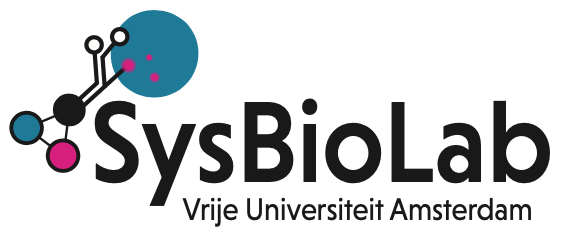Jurgen and Christoff contributed a kinetic modelling analysis to a publication that came out last month in Nucleic Acid Research. The paper describes improved measurements of globally quantify RNA processing rates and half-lives for mRNAs in the sleeping sickness parasite Trypanosoma brucei.
Christoff plugged those values into a kinetic model of gene expression. The modelling shows that RNA half-life is a stronger predictor of total mRNA levels than the RNA processing rates. However, none of the two processes alone was sufficient to fully predict total RNA levels. Instead, both processes exert control, and it is the combination of them that determines RNA total levels.
The paper is linked to other papers that our group published in collaboration with other groups: A previous model that Jurgen made in 2008, has now been used again to interpret improved datasets. For the modelling this is a follow up to analysis with versions of the model in 2014 and 2016.

Recent Comments